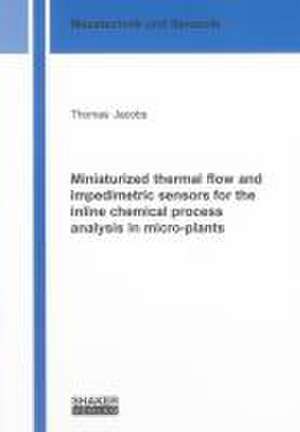Miniaturized thermal flow and impedimetric sensors for the inline chemical process analysis in micro-plants: Messtechnik und Sensorik
Autor Thomas Jacobsen Limba Engleză Paperback – 31 mai 2011
Preț: 289.08 lei
Nou
Puncte Express: 434
Preț estimativ în valută:
55.32€ • 57.41$ • 46.24£
55.32€ • 57.41$ • 46.24£
Carte indisponibilă temporar
Doresc să fiu notificat când acest titlu va fi disponibil:
Se trimite...
Preluare comenzi: 021 569.72.76
Specificații
ISBN-13: 9783832299064
ISBN-10: 3832299068
Pagini: 183
Ilustrații: 61 farbige Abbildungen
Dimensiuni: 146 x 208 x 20 mm
Greutate: 0.37 kg
Editura: Shaker Verlag
Seria Messtechnik und Sensorik
ISBN-10: 3832299068
Pagini: 183
Ilustrații: 61 farbige Abbildungen
Dimensiuni: 146 x 208 x 20 mm
Greutate: 0.37 kg
Editura: Shaker Verlag
Seria Messtechnik und Sensorik










